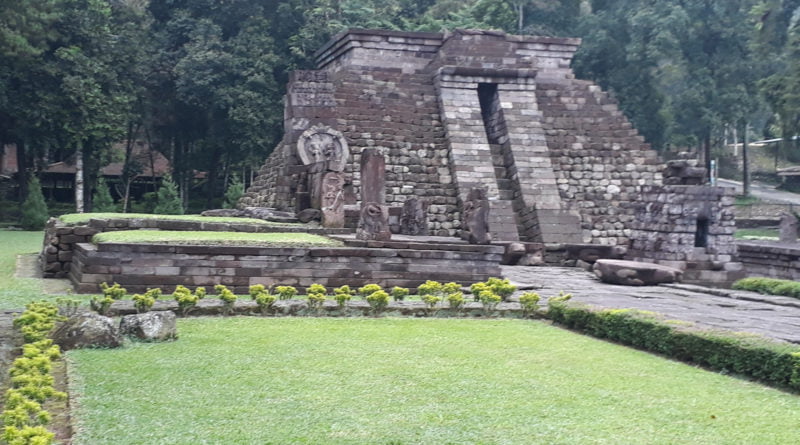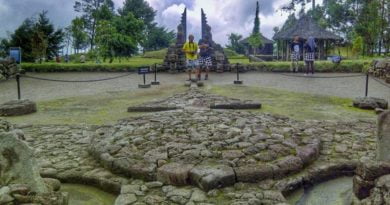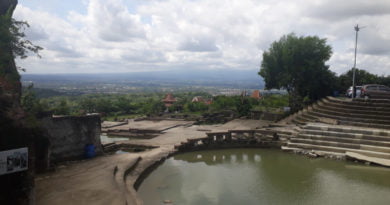Candi Sukuh
Candi Sukuh is an ancient temple located on the western slope of Mount Lawu in Karanganyar Regency, Central Java, Indonesia. The temple is believed to have been built during the 15th century, near the end of the Majapahit era.
Today, Candi Sukuh is considered a national heritage site and is protected by the Indonesian government. The temple complex has undergone restoration work in recent years to help preserve its unique architecture and cultural significance.
The temple complex is notable for its unique architecture, which combines elements of Hinduism and indigenous Javanese beliefs. The complex consists of several structures, including a main temple, a terraced courtyard, and several smaller shrines and pavilions. The main structure of the temple is a stepped pyramid, with steep stairs leading up to the top similar in shape to the Mayan pyramids of Central America. The temple is also decorated with reliefs depicting scenes from Hindu and Buddhist mythology. The terraced courtyard below the temple is also decorated with carvings and sculptures, including a large stone statue of a reclining woman, which has led some to speculate that the site was used for fertility rites, as well as carvings of various animals and figures.
Candi Sukuh is sometimes referred to as the “erotic temple” due to the presence of several sexually suggestive carvings and sculptures, although it is unclear what these depictions were intended to symbolize. Some have suggested that the temple was used for Tantric rituals, although there is little concrete evidence to support this theory.
Candi Sukuh is located in a remote area of Central Java, surrounded by dense jungle and steep hills. The temple can be reached by a steep and winding road, which is often frequented by hikers and adventurers. Despite its remote location, Candi Sukuh is a popular tourist destination and attracts visitors from around the world who are interested in Javanese culture and history.
Today, Candi Sukuh is a popular tourist destination, attracting visitors who are interested in its unique architecture and historical significance.
















